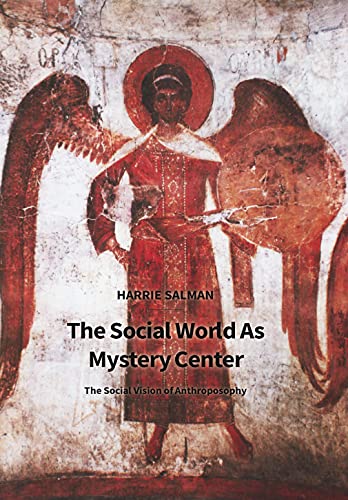In ancient times mystery centers and schools of initiation were in isolated locations, removed from the many distractions of ordinary life. Harrie Salman, the Dutch philosopher and sociologist, in his book on The Social World as a Mystery Center, maintains that Rudolf Steiner had a markedly different vision of where the mystery centers of modern life take place, namely in the everyday, where we play, live, and work with others. In describing his inner journey and his growing acquaintance with Rudolf Steiner’s work he notes,
Now I began to perceive how new mysteries are enacted between
people in everyday life. On this path I discovered the essence of Anthroposophy, namely the search for new social forms for a new spiritual culture and a new spirituality that can arise in meeting others. To me this is the nature of the new mysteries, inaugurated by Rudolf Steiner during the important Conference of 1923. We can work towards a new culture out of a renewed relationship to the spiritual world. But this new culture needs the support of a new social life and the protection of new communities.
In direct short sentences Salman describes the mysteries taking place in social life based on Rudolf Steiner’s insights. These include the working of social and anti-social forces in the human soul in our time, the archetypal social phenomena of human meeting, conversation and the working of karma, the principles and laws at work in the social world such as the Basic Sociological Law and the Fundamental Social Law. He then outlines the needs Steiner saw for a restructuring of society, acknowledging the three spheres of culture, the state and the economy.
Salman asks the poignant question of why the social mission of Anthroposophy and the social path of human development were taken up by so few of Steiner’s students and why these paths of development were not more actively fostered by the Anthroposophical Society.
The reason for a barely developed consciousness of rights in the anthroposophical
movement is a poor understanding of the social impulse. The threefolding social impulse was a reality for Steiner. In his conscious impulses lived archetypal thoughts of social life while they lived more or less unconsciously in the instinctive life of his contemporaries. By activating the threefold impulse in society, Steiner wanted to give modern humanity the opportunity to think the thoughts of the other in spiritual life; to experience equality in relation to the other in the practice of political life, and to work out of the other’s needs in economic life. These are, as Dieter Bruell remarked, three aspects of the social impulse of Anthroposophy immediately connected to the activity of the Christ within.
This is the second, expanded edition in English of Harrie Salman’s book, having first appeared in Dutch in 1994, translated into English in 1999, with the present edition having been published in 2020. This short book is a wonderful heart- filled companion work to Dieter Bruell’s Der Anthroposophische Sozial Impuls, translated as The Mysteries of Social Encounters and published by ASWNA in 2002. If you are seeking a deeper understanding of the profound spirit-filled social insights of Rudolf Steiner,insights which seem as relevant today as they were during his lifetime, read these two books.
Let me end with a rather lengthy quote from the author because in it Salman articulates the central mystery of social life, namely that our higher self, our true I, only comes to consciousness in our relation with others.
On December 27
th, 1918, Steiner said that our higher being (the higher I) is in all that we meet outside and least within ourselves. It meets us from outside, in karmic relationships. These meetings allow us to experience the awakening of our higher being in daily life as a social process. Through the renewing force of Christ the transformation of the old human being into the new human being (the inner, spiritual being) gradually takes place in our relationships. This process brings self- consciousness and an inkling of what lies within as possibilities and tasks. This brief awakening of the higher being in our soul may be called a moment of Whitsun. It is the festival of the free individuality as well as of community, the festival of the birth of a higher being in the individual soul and the birth of a new sociality."
Taking an active interest in others is therefore the path to our own evolution and the essential act in acknowledging the world as the mystery center of our time. Conscious conversation between two or more people can also be a revolutionary deed.
